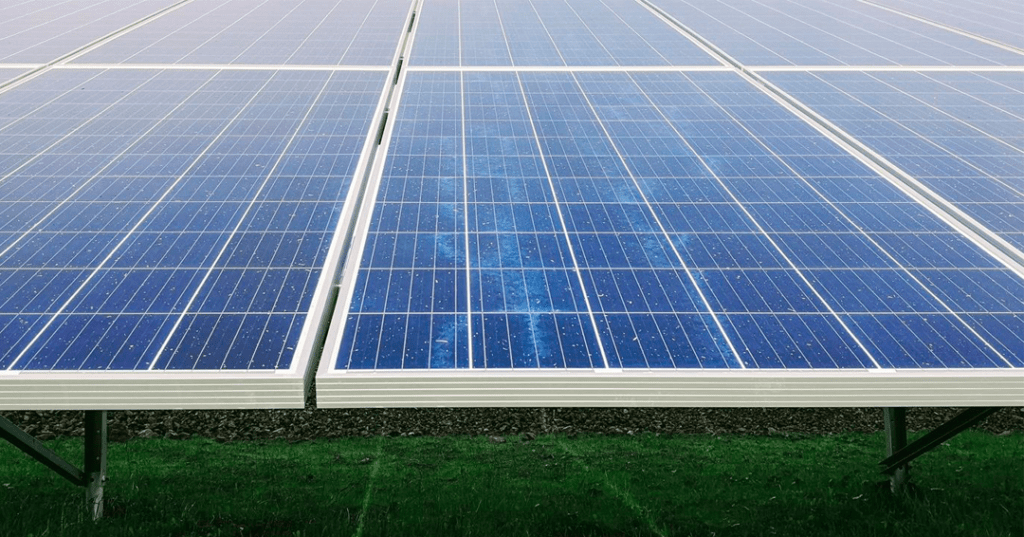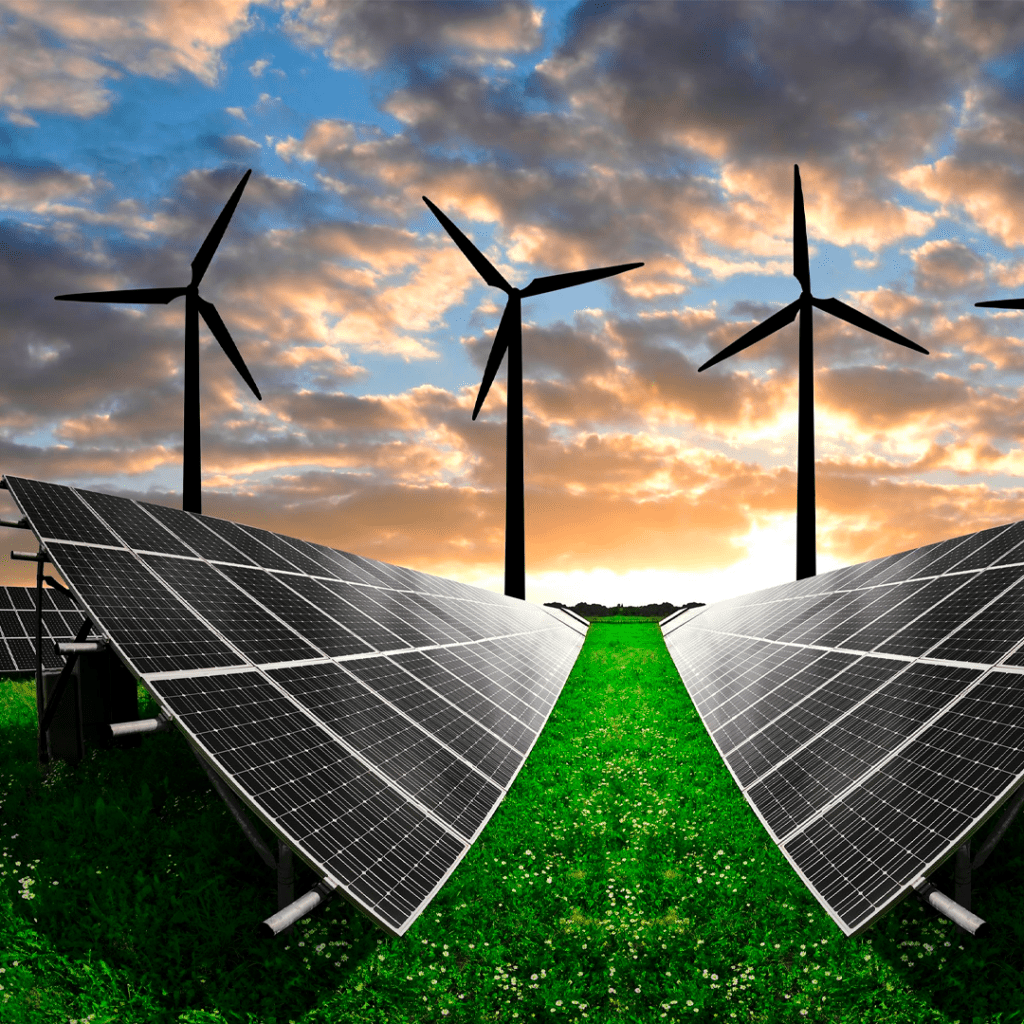In conclusion, solar storage is playing an increasingly important role in today’s energy landscape and is expected to grow in importance in the future. Solar storage solutions make the most of the energy generated by solar sources, store excess energy for later use, and improve the stability and flexibility of power grids.
The future of solar storage looks promising thanks to ongoing technological advances. Efficiency improvements and cost reductions in storage technologies are expected to drive their widespread adoption. In addition, the integration of solar storage solutions with smart grids will enable more efficient energy management and greater stability in power supply.
Large-scale solar storage will play a key role in supporting intermittent solar power generation and ensuring reliable supply. Solar storage is also expected to have a significant impact on electrification and sustainable mobility, as it will support electric vehicle charging and energy demand management in key sectors.
In addition, decentralized storage and hybrid energy systems are expected to increase, enabling greater energy autonomy at the local and community level.
In summary, solar storage has a promising future, as it will contribute to a transition to a more sustainable, efficient and decentralized energy system. As technology advances and costs decrease, solar storage will play an essential role in the generation and supply of clean, renewable energy.
Benefits of solar storage solutions
Reduced dependence on the traditional power grid: Solar storage solutions allow the energy generated during the day to be stored for later use, reducing the need to rely entirely on the conventional power grid. This provides greater energy independence and reduces the costs associated with the purchase of electricity.
Optimization of self-consumption and management of generated energy: By using solar storage systems, homeowners can maximize their self-consumption of solar energy. This means that they can use the energy generated by their solar panels instead of exporting it to the grid. By storing excess energy for use at times of low solar production, valuable energy is avoided and more efficient management of the energy generated is achieved.
Responding to the variability of solar generation: Solar generation is intermittent due to factors such as sunlight availability and weather conditions. Solar storage solutions allow for smoothing this variability by storing surplus energy during times of high production and utilizing it during periods of low production. This ensures a more consistent and reliable energy supply.
Increased resilience and energy security: In the event of power outages or grid interruptions, solar storage solutions can provide backup and continuous power supply. This is especially useful in emergency situations or in areas where the grid is less reliable. Solar storage offers increased resilience and energy security by allowing systems to continue to operate even when the grid is down.
Environmental benefits: Solar storage solutions contribute to the reduction of greenhouse gas emissions and positive environmental impact. By using stored solar energy, the need to burn fossil fuels to generate electricity is avoided, which reduces the carbon footprint and helps mitigate climate change. In addition, solar storage can be integrated with renewable energy systems, such as wind power, to create a more sustainable, emission-free energy system.
Types of solar storage technologies

Lithium-ion batteries: Lithium-ion batteries are one of the most popular and widely used solar storage technologies. They are known for their high energy density, charge and discharge efficiency, and long service life. These batteries are capable of storing the energy generated by the solar panels during the day and releasing it when needed, allowing for a constant supply of energy.
Thermal storage: This technology takes advantage of the capacity of heat to store energy. Solar thermal storage is generally done using molten salts or hot water that are stored in insulated tanks. During periods of high solar production, thermal energy is stored in these media and subsequently used to generate electricity or provide heat and hot water.
Hydrogen storage: Hydrogen storage is a promising option for long-term storage and transport of solar energy. In this approach, electricity generated by solar panels is used to produce hydrogen through the electrolysis of water. The hydrogen is stored and can then be used to generate electricity or power hydrogen vehicles.
Heat pumps: Although not considered a solar storage technology per se, heat pumps can work in conjunction with solar PV systems to store thermal energy. During periods of high solar production, heat pumps absorb excess energy and store it as heat in a thermal storage tank. The stored heat can then be used for heating, domestic hot water or industrial processes.
Factors to consider when choosing a solar storage solution
When choosing a solar storage solution, it is critical to consider a number of factors to ensure that it meets the specific needs of each installation. Here are some key factors to consider:
Capacity and scalability – Evaluate the storage capacity required to meet energy needs. Consider average daily consumption and peak demand, as well as the possibility of future expansion or changes in energy consumption. Ensure that the storage solution is scalable and can adapt to increased solar generation or higher energy demand.
Efficiency and life cycle: Understand the charging and discharging efficiency of the storage system. Look for solutions with high energy efficiency to minimize losses during the storage and release process. In addition, consider system lifetime and degradation of batteries or other components over time. Longer life cycle and increased durability are indicators of a reliable and cost-effective long-term storage solution.
Costs and return on investment: Evaluate the upfront and operating costs associated with the solar storage solution. Consider the price of acquisition, installation and maintenance, as well as potential electricity bill savings over time. Calculates the estimated return on investment and payback period to determine the financial viability of the solution.
Integration with existing systems: Ensure that the solar storage solution is compatible and integrates seamlessly with the existing solar panel system and other components of the facility. Efficient communication between systems and compatibility with solar inverters and the grid are crucial aspects to consider.
Spatial and siting requirements: Evaluate the space available for the installation of the solar storage system. Some storage technologies, such as batteries, may require additional space. Also, consider the environmental and climatic conditions of the location, as they may influence the performance and lifetime of the system.
System management and control: Evaluate the management and control capabilities of the storage solution. Look for systems that allow efficient monitoring and control of battery charging, discharging and status, as well as intelligent management of stored energy to optimize its use.
Technical support and warranty: Make sure that the solar storage solution provider offers solid technical support and an adequate warranty. This is important to ensure proper operation of the system and to have assistance in case of problems or queries.
Case studies: Real examples of implementation of solar storage solutions

Here are some real-world examples of implementing solar storage solutions in different contexts:
Residential solar storage: many homeowners have chosen to install solar storage systems in combination with solar panels in their homes. These systems make it possible to store solar energy generated during the day for use at night or at times of high demand. Homeowners can maximize their self-consumption and reduce their dependence on the conventional power grid. Examples of companies offering residential solar storage solutions include Tesla Powerwall, LG Chem and Sonnen.
Commercial and community projects: In several commercial and community projects, solar storage solutions have been implemented to maximize the use of on-site generated solar power and reduce electricity costs. For example, some apartment complexes or office buildings have installed solar storage systems to supply residents or tenants with renewable energy and reduce their carbon footprint. These projects can also participate in demand-side management programs and gain additional economic benefits. One example is the Brooklyn Microgrid project in New York, where residents share stored solar energy through a local distribution network.
Large solar storage facilities: As demand for renewable energy increases, large solar storage facilities are being built to contribute to grid stability and manage intermittent large-scale solar power generation. One prominent example is the Hornsdale Power Reserve project in Australia, developed by Tesla in partnership with the Australian government. This large-scale energy storage facility uses lithium-ion batteries and is one of the largest in the world. It provides grid stability services, including rapid demand response and frequency regulation.
These examples represent just a few case studies of implementing solar storage solutions. There are numerous projects around the world, both small and large scale, that demonstrate the value and benefits of these solutions. Each case is tailored to the specific needs of the installation and highlights the advantages of solar storage in terms of efficiency, sustainability and cost reduction.
The future of solar storage
The future of solar storage is promising and is expected to play an increasingly important role in the energy landscape. Here are some key trends and developments that are on the horizon for the future of solar storage:
Technology advances – Advances in solar storage technologies are expected to continue, both in terms of efficiency and cost. Research and development is underway to improve storage battery capacity, extend battery life, and reduce costs. In addition, new storage technologies are being explored, such as flow batteries, solid-state batteries, and advanced thermal storage systems, which could offer increased storage capacities and efficiency.
Integration with smart grids: With the growth of smart grids and the digitization of the energy sector, further integration of solar storage solutions into the grid infrastructure is expected. This will enable more efficient energy management, facilitate the integration of intermittent renewable sources, and support greater stability and flexibility in power supply.
Large-scale storage: As large-scale solar penetration increases, more large-scale storage will be required to support intermittent generation and ensure reliable power supply. Large-scale storage projects, such as large batteries and large-scale thermal storage systems, are expected to play a crucial role in grid stabilization and demand management.
Electrification and sustainable mobility: The growth of electric mobility and the electrification of various sectors, such as transportation and industry, will generate increased demand for energy storage. Solar storage solutions are expected to play a key role in power supply for electric vehicle charging and energy demand management in these sectors.
Decentralized storage and hybrid systems: With the rise of distributed generation and hybrid energy systems, solar storage is expected to increase at the local and community level. Decentralized storage systems will allow for greater energy autonomy and resilience in the event of blackouts or grid outages.
These trends point to a future in which solar storage will play an essential role in the transition to a more sustainable, efficient and decentralized energy system. As technologies continue to evolve and costs come down, solar storage is likely to play an even greater role in the generation and supply of clean, renewable energy.
Conclusion
In conclusion, solar storage is playing an increasingly important role in today’s energy landscape and is expected to grow in importance in the future. Solar storage solutions make the most of the energy generated by solar sources, store excess energy for later use, and improve the stability and flexibility of power grids.
The future of solar storage looks promising thanks to ongoing technological advances. Efficiency improvements and cost reductions in storage technologies are expected to drive their widespread adoption. In addition, the integration of solar storage solutions with smart grids will enable more efficient energy management and greater stability in power supply.
Large-scale solar storage will play a key role in supporting intermittent solar power generation and ensuring reliable supply. Solar storage is also expected to have a significant impact on electrification and sustainable mobility, as it will support electric vehicle charging and energy demand management in key sectors.
In addition, decentralized storage and hybrid energy systems are expected to increase, enabling greater energy autonomy at the local and community level.
In summary, solar storage has a promising future, as it will contribute to a transition to a more sustainable, efficient and decentralized energy system. As technology advances and costs decrease, solar storage will play an essential role in the generation and supply of clean, renewable energy.



